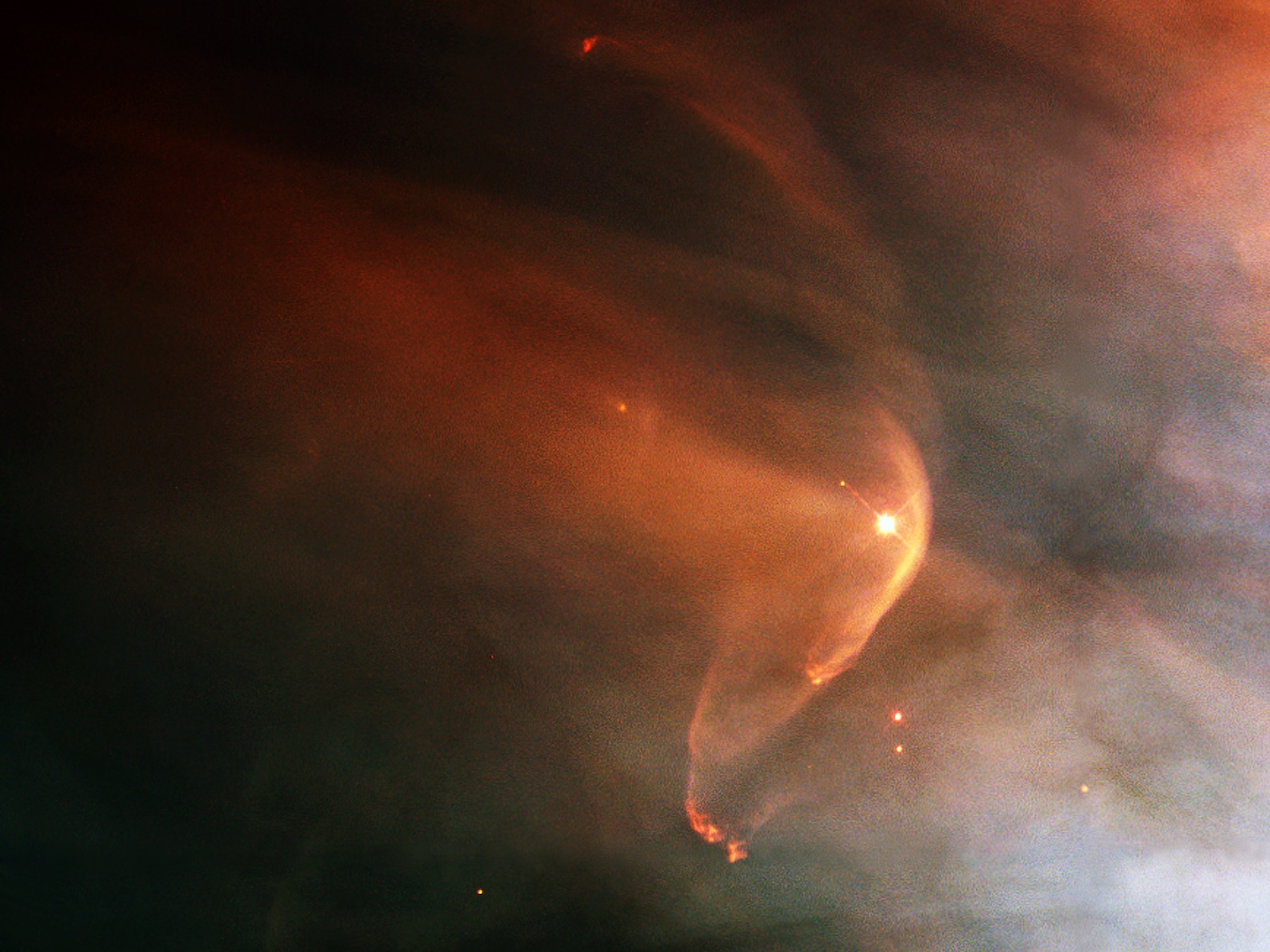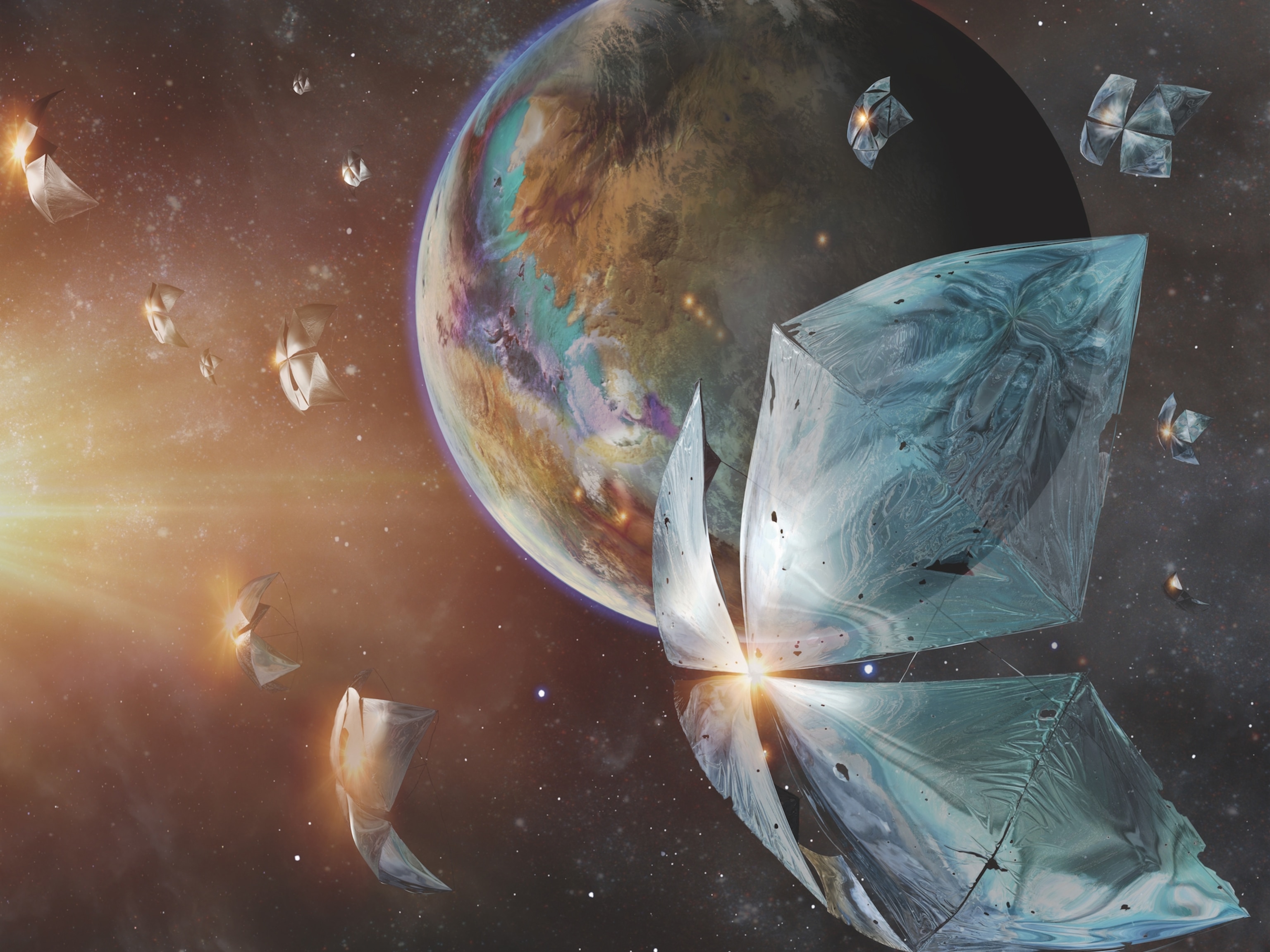
Sun Is Moving Slower Than Thought
"Shocking" find may redraw picture of solar system's cosmic shield.
The sun is moving through the Milky Way slower than previously thought, according to new data from a NASA spacecraft.
From its orbit around Earth, the Interstellar Boundary Explorer (IBEX) satellite measured the speeds of interstellar particles entering at the fringes of our solar system, 9 billion miles (14.5 billion kilometers) from the sun.
(Related: "'Alien' Particles Found Invading Our Solar System—A First.")
Plugging the new data into computer models, the IBEX team calculates that the sun is moving at about 52,000 miles (83,700 kilometers) an hour—about 7,000 miles (11,000 kilometers) slower than thought.
The discovery suggests that the protective boundary separating our solar system from the rest of the galaxy is missing a bow shock, a major structural component thought to control the influx of high-energy cosmic rays.
(See "New Hubble Videos Show Star Jets in Action.")
The sun is constantly sending out charged particles in all directions, forming a cocoon around the solar system called the heliosphere.
Like a boat moving through water, it's long been thought that the "bow" of the heliosphere forms a crescent-shaped shockwave as our solar system plows through the surrounding cloud of interstellar gas. (See "Solar System's 'Nose' Found; Aimed at Constellation Scorpius.")
But the new IBEX findings mean the sun is moving so slow that pressure from material flowing around the heliosphere is 25 percent lower than expected—not enough for a bow shock.
Until now, "all the solar system models and theories included a bow shock," said study leader David McComas of the Southwest Research Institute in San Antonio, Texas.
"Having learned for nearly three decades about it, I was literally shocked when we found it was missing."
Cosmic-Ray Shielding Key for Life?
The absence of a bow shock is significant, McComas said, because it may indicate that the heliosphere is actually more robust than thought.
With less pressure from outside material, the boundary region isn't being compressed and therefore weakened as much as expected, which means it should better repel cosmic rays.
(Related: "Solar System 'Force Field' Shrinks Fast.")
And understanding exactly how the heliosphere acts as a gatekeeper for cosmic rays could help scientists evaluate the chances for life on other worlds.
According to McComas, some researchers believe that the cosmic rays that do get through the heliosphere can impact Earth's climate, because the high-energy particles can ionize—or electrically charge—matter in the atmosphere, leading to heightened cloud formation and lightning generation.
Other experts think the particles could even be related to bursts of evolution or extinction in our planet's history, because the radiation can influence DNA patterns.
(Also see "Ancient Mass Extinctions Caused by Cosmic Radiation, Scientists Say.")
For now, the science behind how cosmic rays have influenced Earth is quite controversial, said Seth Redfield, an astronomer from Wesleyan University in Connecticut who was not involved with the new IBEX study.
Still, considering the rays' expected effects, Redfield said, "it seems obvious to me that there will be scenarios or times when the cosmic-ray flux on a planet is important and [is] having a major influence on the evolution of the planetary atmosphere or even on biological processes on its surface."
In that case, astronomers assessing the habitability of alien planets may need to start considering not only the chances for liquid water but also the strength of other stars' protective cocoons, study leader McComas said.
"There is no doubt," he said, "that questions about cosmic-ray shielding go right to the heart of some really important questions related to life as we know it."
The slower-sun study appears in this week's issue of the journal Science.





